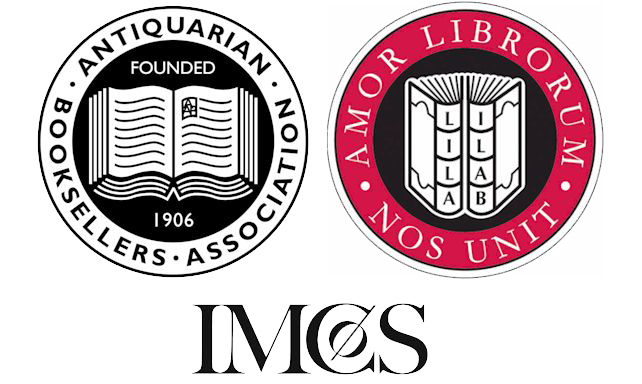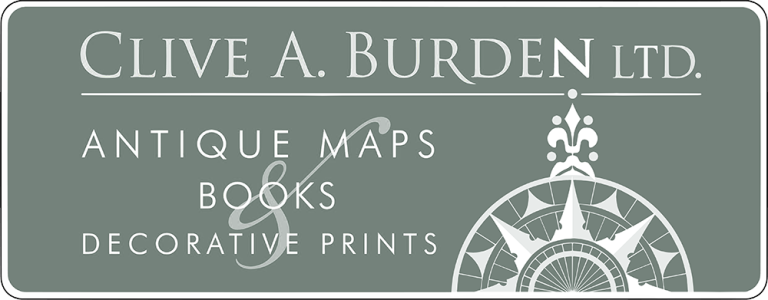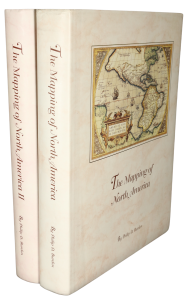Rare Maps and Prints
- World & Celestial
- North America
- West Indies, South & Central America
- British Isles
- British Isles
- English counties
- Large-scale
- Bedfordshire
- Berkshire
- Buckinghamshire
- Cambridgeshire
- Cheshire
- Cornwall
- Cumberland
- Derbyshire
- Devon
- Dorset
- Durham
- Essex
- Gloucestershire
- Hampshire
- Herefordshire
- Hertfordshire
- Huntingdonshire
- Islands
- Kent
- Lancashire
- Leicestershire
- Lincolnshire
- Middlesex
- Norfolk
- Northamptonshire
- Northumberland
- Nottinghamshire
- Oxfordshire
- Rutland
- Shropshire
- Somerset
- Staffordshire
- Suffolk
- Surrey
- Sussex
- Warwickshire
- Westmoreland
- Wiltshire
- Worcestershire
- Yorkshire
- Wales
- Scotland
- Ireland
- Western Europe
- Eastern Europe
- Middle East
- Africa
- Asia
- Australasia & Pacific
- Decorative Prints
- Title Pages
Mr. Philip D. Burden
P.O. Box 863,
Chalfont St. Giles, Bucks HP6 9HD,
UNITED KINGDOM
Tel: +44 (0) 1494 76 33 13
Email: enquiries@caburden.com
‘a resemblance of Sodome, or the last day. It call’d to mind that of 4 Heb: non enim hic habemus stabilem Civitatem; the ruines resembling the picture of Troy. London was, but is no more’
On 7 September 1666, the day after the fire ended, he walked through the city and reported his hair almost singed:
‘I went this morning on foote from White hall as far as London bridge … with extraordinary difficulty, clambring over mountaines of yet smoking rubbish, & frequently mistaking where I was, the ground under my feete so hott, as made me not onely Sweate, but even burnt the soles of my shoes’.
The print is engraved by the highly reputed Wenceslaus Hollar (1607-77). He is one of the first to record in such detail and quantity the English way of life in the seventeenth century. The breadth and depth of his work is remarkable. He was born in Prague on 13 July 1607 as Václav Hollar, which he would later anglicise. His childhood was a life of some privilege which enabled him access to some of the finest art works of the era, including that of the principal court engraver Aegidius Sadeler with whom it is believed Hollar learnt to engrave. Hollar’s early work was in Prague but the turmoil at home encouraged him to go to Stuttgart, Germany in 1627. Two years later he appears to have moved further west to Strasbourg. His natural talent flourished alongside the likes of Jan van de Velde and shortly after Matthaus Merian in Frankfurt. He worked all along the river Rhine including the Dutch towns.
It was in 1636 that a fortuitous meeting occurred with the English envoy Thomas Howard, the Earl of Arundel. Hollar joined the entourage and was employed to record their travels. At the end of the year the Earl of Arundel returned to England and was joined by Hollar. For the next six years he worked closely alongside him. The Earl and his circle were fervent Royalists which it appears matched Hollar’s own sympathies. According to the eighteenth-century engraver George Vertue, he fought during the Civil War being present at the garrison of Basing House in 1644 with other notable artists such as Inigo Jones and William Faithorne. During this period some of his engravings were published by the largest printseller at the time, Peter Stent. The Arundel’s had left London for Holland just before the outbreak of the Civil War. In 1646 Hollar joined them only to return in 1652.
In 1660 Hollar proposed to produce a very large plan of London ’10 foot in bredth, and 5 foot upward wherein shall be expressed, not onely the streets, lanes, alleys etc. proportionably measured; but also the buildings (especially of the principall houses, churches, courts, halls, etc.) as much resembling the likeness of them, as the convenience of the roome will permitt’. It was never completed due to the Fire of London destroying that which he had recorded.
Almost certainly Hollar witnessed the fire. Quickly he planned this engraving drawing for the upper panel from his magnificent earlier panorama of 1647 taken from the perspective of the steeple of Southwark Cathedral which at the time was known as the church of St. Mary Overy. It is highly likely that Hollar would have returned to the same spot to record the lower image and the devastation in detail. It takes in London from Temple Church just below Fleet Street to the Tower of London. Within just a couple of months the print was available. Samuel Pepys (1633-1703) records in his diary for 22 November 1666:
‘Up, and to the office, where we sat all the morning, and my Lord Bruncker did show me Hollar’s new print of the City, with a pretty representation of that part which is burnt, very fine indeed; and tells me that he was yesterday sworn the King’s servant, and that the King hath commanded him to go on with his great map of the City, which he was upon before the City was burned’.
It was sold by John Overton (1640-1713) who had only been made free in 1663 and acquired Peter Stent’s stock in 1665. Those premises at the White Horse in Giltspur Street were burned in the fire and he was forced to relocate to Little Britain just outside the extent of the fire. By 1668 he had returned to a rebuilt Newgate on ‘the corner of the little old Baly neere the fountaine tavern without Newgate’. That address appears on this the third state of the print. According to Scouloudi and Pennington there are five states, the last being issued by the firm of Laurie & Whittle in 1795. Any state is very rare, New Hollstein records only 27 impressions in any state. Only one example has been seen at auction in twenty-three years, at Christies New York, 29 January 2019, where a second state as lot 155 fetched $32,500. That example had been acquired in 1982. That example had a repaired tear and brown mark from its frame.
As in interesting aside utilising the current average price of a London house the fire destroyed £7.5 billion worth of housing. Working on the idea that it destroyed a quarter of the housing stock in London at the time, the economic impact of that today would be a loss of £500 billion worth (Actuarial Post).
Provenance: Sotheby’s London 7 December 1993 lot 185, a five-volume composite ‘History of England’ by David Hume 1806 with 1,644 plates! It had the bookplate of Richard Henry Alexander Bennet. The prints were collected by the noted Richard Bull (1721-1805) whose daughter was Elizabeth Bull of North Court Manor, Isle of Wight (1749-1809). She left her books to R. H. Alexander Bennet of Beckenham, Kent. The lines round the sheets are typical of Richard Bull, who had put the collection together.
Baynton-Williams (2006); Evelyn’s diary https://www.pepysdiary.com/indepth/2009/09/02/evelyns-fire/; Griffiths & Kesnerová (1983) p. 64, no. 113 (ill.); Hind (1922) no. 19, pl. 26; New Hollstein (2009) 1917; ODNB; Pennington (1982) 1015.3; Pepys diary https://www.pepysdiary.com/diary; Scouloudi (1953) pp. 81-2; Worms & Baynton-Williams (2011).






